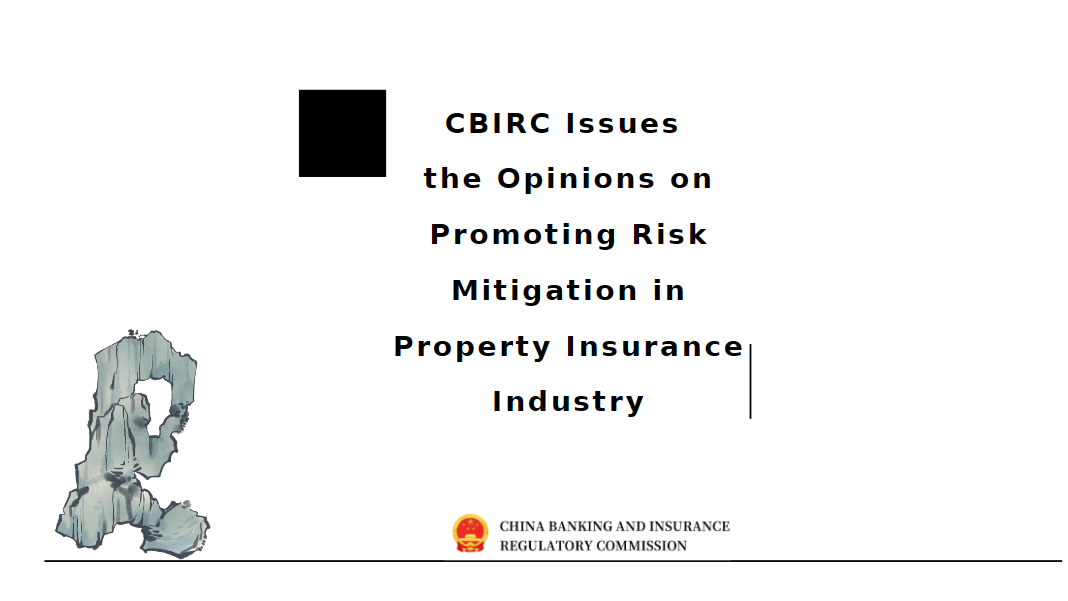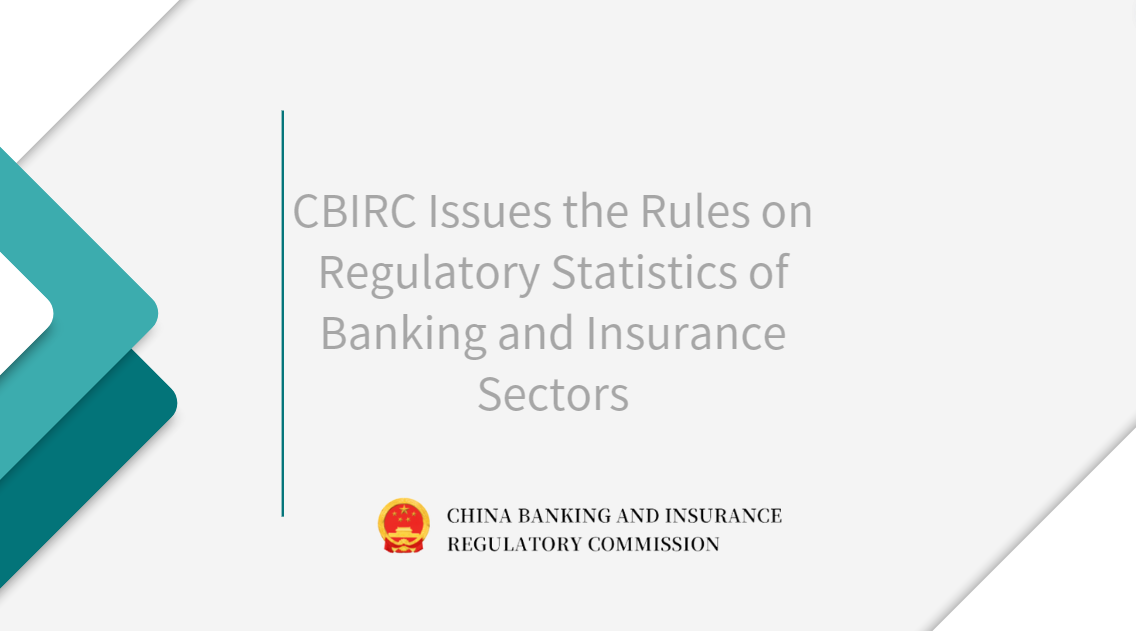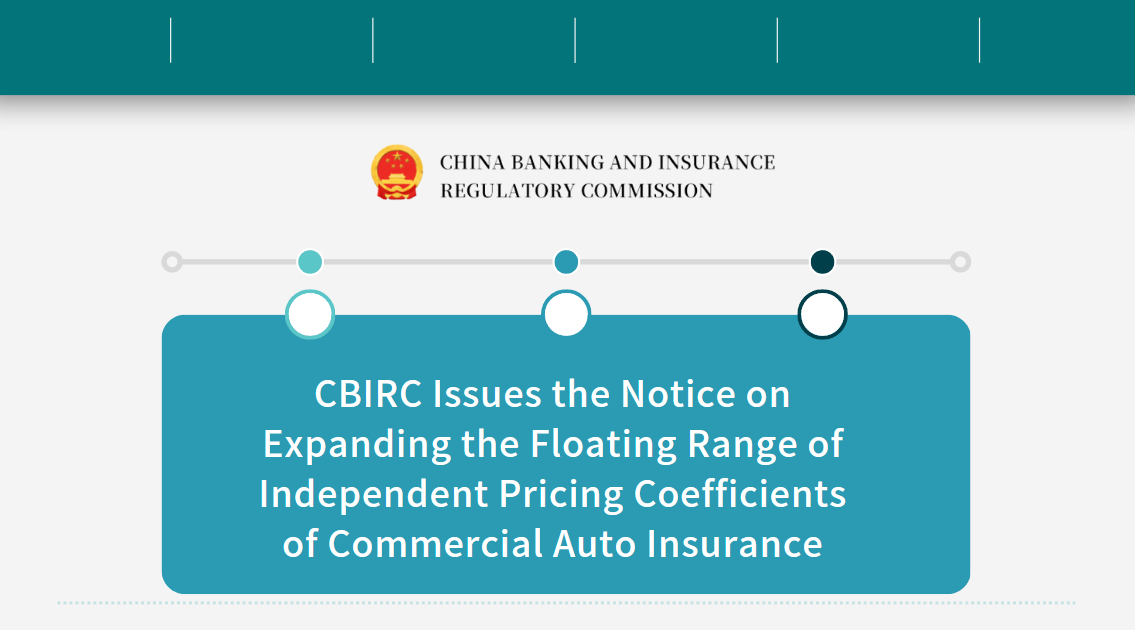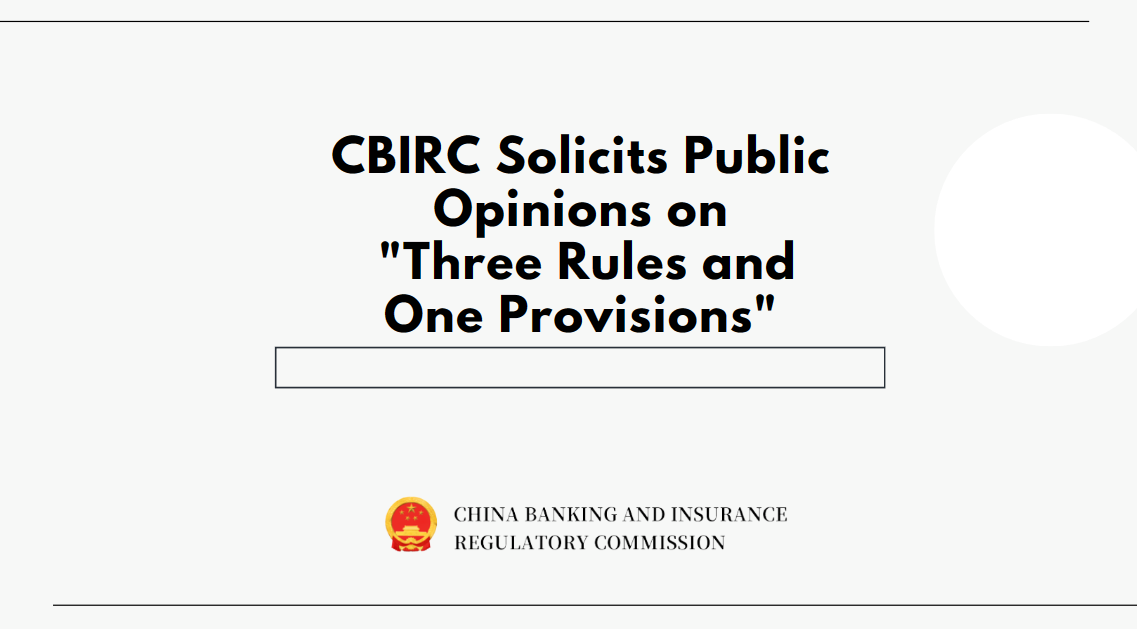CBIRC and PBOC Officials Answered Press Questions on the Rules on Risk Classification of Financial Assets of Commercial Banks
The Rules on Risk Classification of Financial Assets of Commercial Banks (hereinafter referred to as the Rules) are formulated by China Banking and Insurance Regulatory Commission (CBIRC) in concert with the People's Bank of China (PBOC) for the purposes of encouraging commercial banks to accurately identify and assess credit risks and truly reflecting asset quality. The responsible persons of relevant departments answered press questions concerning the Rules.
I. How did the public opinion solicitation on the Rules go?
From April 30 to May 31, 2019, the PBOC solicited public opinions on the Rules. Financial institutions, industry self-regulatory organizations, experts, scholars, and the general public paid extensive attention. We carefully examined each opinion and, after further investigation and calculation, adopted all reasonable suggestions. The Rules set more reasonable standards for identifying non-performing assets, and made appropriate revision taking into account the influence of different clauses and the differences between various types of institutions. This will enable commercial banks to truly and accurately reflect asset quality and effectively prevent and control credit risks.
Compared with the Exposure Draft, the officially released Rules were revised mainly in the following aspects: First, they further define the scope of classified,assets, excluding financial assets under bank transaction books and assets related to derivatives transactions. Second, they further clarify the relationship between the five-tier classification of financial assets and accounting treatment, and identify the assets with credit impairment as non-performing assets. Third, they further optimize some existing classification standards by adjusting and improving certain clauses regarding cross default and asset restructuring. Fourth, they further refine the implementation schedule and scope with an appropriate transition period and a differentiated implementation plan.
II. What is the background for the formulation of the Rules?
Credit risk is the most important risk confronting China’s banking industry, and a sound risk classification system is a vital prerequisite for the effective prevention and control of credit risk. In 1998, the PBOC issued the Guiding Principles of Loan Risk Classification, introducing the idea of five-tier classification. In 2007, the former China Banking Regulatory Commission issued the Guidelines on Risk-Based Loan Classification (hereinafter referred to as the Guidelines), which further clarified the supervisory requirements of five-tier classification. In recent years, there have been great changes in the asset structure of commercial banks in China, bringing about various new issues for loan risk classification. In 2017, the Basel Committee on Banking Supervision (BCBS) issued the Guidelines for the Prudential Treatment of Problem Assets, which clarified the identification standards and classification requirements for non-performing exposures and restructured assets, aiming to harmonize the asset risk classification standards in the global banking industry and enhance the comparability of results. The new accounting standards have put forward the requirement of addressing random classification of financial instruments, deferred provision for asset impairment and other issues. Drawing on international and domestic standards, the CBIRC and the PBOC formulated the Rules based on the current situation and regulatory practices of China’s banking industry. The Rules aims to urge commercial banks to accurately identify risk levels and put into place asset risk classification, which is conducive to effectively forestalling and defusing credit risks in the banking industry and upgrading the services provided to the real economy.
III. What principles should be followed in the risk classification of financial assets?
When conducting risk classification of financial assets, commercial banks should follow the principles of truthfulness, timeliness, prudence and independence. Accurate classification is the starting point for commercial banks’ sound credit risk management. They should carry out risk classification in strict accordance with the Rules, and make timely adjustments according to the debtor’s performance capacity and the changes in the risk exposure of financial assets. For hard-to-value assets, commercial banks should strictly observe and implement the classification standards. Furthermore, they should perform independent risk assessment in accordance with the laws and regulations, so as to guarantee that their classifications truly reflect the asset’s risk status.
IV. What are the main contents of the Rules?
The Rules, consisting of six chapters and 48 articles, expand the scope of assets that are subject to risk classification to cover not only loans but also all the other financial assets that bear credit risks. Excluding the general and supplementary provisions, the Rules focus on four aspects. First, requirements are laid down regarding the risk classification of financial assets. The Rules define the five risk-based categories of financial assets, set criteria for the risk classification of retail assets and non-retail assets, make stipulations on past-due exposures, impaired assets, evasion of debt obligations, and issues such as upgrading of classification outcomes and risk classification involving mergers and acquisitions, asset management products, or securitization products. Second, requirements are laid down regarding the risk classification of restructured assets. The Rules specify the definition of restructured assets, the identification criteria, the exit criteria as well as the classification requirements under different scenarios, and set an observation period for restructured assets. Third, the Rules require banks to strengthen their management of risk classification.
Commercial banks shall improve their risk classification governance structure, formulate regulations for their management of risk classification, specify classification methods, processes and intervals, develop and improve the information systems, and enhance monitoring and analysis, information disclosure as well as file management. Fourth, the Rules set regulatory requirements. Regulators shall conduct inspections and assessments of commercial banks’ risk classification management. Banks that do not follow the requirements shall be subjected to regulatory measures and administrative penalties.
V. What does debtor-centered risk classification mean?
According to the existing Guidelines, loans are classified into risk-based categories on an individual basis so that exposures to the same debtor can be categorized differently as normal, special-mention, substandard, doubtful, or loss. In the Basel Committee Guidelines for the Prudential Treatment of Problem Assets, it is pointed out that a bank should consider all its exposures to a non-retail counterparty as non-performing when any one of the material exposures is non-performing. In light of the principle and the fact that corporate clients have relatively sound corporate governance and financial data, the Rules provide that commercial banks focus on a debtor’s repayment capacity when they conduct risk classification of non-retail financial assets. If over 10 percent of a bank’s exposures to a debtor are categorized as non-performing, so shall be all its exposures to the same debtor. If over 20 percent of all banks’ exposures to a debtor are more than 90 days past due, then all their exposures to the same debtor shall be categorized as as non-performing.
It should be noted that guarantees are also considered in the process. Commercial banks are allowed to categorize their non-performing exposures to the same non-retail debtor on an individual basis as substandard, doubtful, or loss, based on the mitigating effect of the guarantees for an exposure. They are also allowed to categorize their retail exposures on an individual basis to take into account such factors as business types, collateral, and guarantees.
VI. How do the number of days past due and credit impairment influence risk classification?
The focus of risk classification is for commercial banks is to make the right judgment on a debtor’s solvency. As the major indicators of worsening asset quality, the number of days past due (DPD) and credit impairment can effectively reflect a debtor's solvency. As DPD thresholds are not clearly related to classification outcomes in the existing Guidelines, some banks have not classified all of their exposures that are more than 90 days past due as non-performing on account of sufficient collateral.
Now the Rules clearly set out that financial assets, once overdue, shall be classified as special-mention or worse; those that are overdue for more than 90 or 270 days shall be classified as no better than substandard or doubtful, respectively; and those that are more than 360 days past due shall be designated as loss. After the Rules come into force, exposures that are more than 90 days past due shall be rated non-performing even if collateral is sufficient. With regard to credit impairment, the new accounting standards for financial instruments provide that write-downs shall be conducted in the accounting treatment of the relevant assets and the loss provisions determined, based on expected credit losses.
In light of the requirements of the new accounting standards, the Rules stipulate that assets with credit impairment shall be classified as non-performing. Specifically, assets with expected credit losses accounting for more than 50 percent of their outstanding balance shall be rated substandard or lower, while those with expected credit losses exceeding 90 percent of their outstanding balance shall fall into the loss category.
VII. Anything new in the Rules regarding restructured assets?
The existing Guidelines lack clarity on the two essential concepts relating to restructured loans, i.e., “deteriorating financial conditions of the debtor” and “contract adjustments”, while providing that restructured loans shall all be categorized as non-performing. In light of international practices, the Rules define restructuring in more detail. First, restructured assets are clearly defined, with a focus on what is meant exactly by “financial difficulties” and “contract adjustments”. The specification of application scenarios will facilitate banks’ implementation of the Rules and leave no room for regulatory arbitrage.
Second, the observation period for restructuring is extended from a minimum of six months to at least a year. The relatively moderate measures for the observation period will be conducive to the progression of debt restructuring.
Third, in line with the principle of “substance over form”, it is no longer required that all restructured assets be classified as non-performing, but instead they shall be rated special-mention or lower. Restructured assets that have been classified as non-performing can be upgraded to special-mention during the observation period if they meet the criteria.
Fourth, the Rules set rules for classification in the case of multiple restructurings. Where the debtor fails to meet the contractual obligations and make full amount repayments in time during the observation period, or the debtor has made full amount repayments but remains in unfavorable financial conditions, the assets restructured once again shall be categorized as no better than substandard, and the observation period shall restart.
VIII. What are the arrangements for the implementation of the Rules?
As we have fully taken into account its possible influence on institutions and the market, there will be a reasonable transition period for the implementation of the Rules so that relevant banks will have enough time to get prepared. The Rules will come into force on July 1, 2023. Businesses to be conducted by commercial banks from then on shall follow the classification rules set down in the Rules. With regard to the businesses conducted prior to July 1, 2023, commercial banks shall make reclassification plans so as to reclassify all of them according to the Rules step by step on a quarterly basis by December 31, 2025.
On the premise of sustainable and sound operation, commercial banks should make scientific work plans in accordance with the Rules. They should carry out a comprehensive checkup to find out the problems in their management of the risk classification of financial assets and move quickly to make rectifications as required. Newly conducted businesses should be classified in strict compliance with the Rules, while the existing assets should be reclassified during the transition period to meet the standards as scheduled. Meanwhile, in compliance with the new regulatory requirements, commercial banks should establish and enhance their risk classification governance structure, improve their regulations on the management of risk classification, optimize the functions of their information systems, and reinforce monitoring, analysis and information disclosure so as to effectively improve their management of risk classification.






















































First, please LoginComment After ~